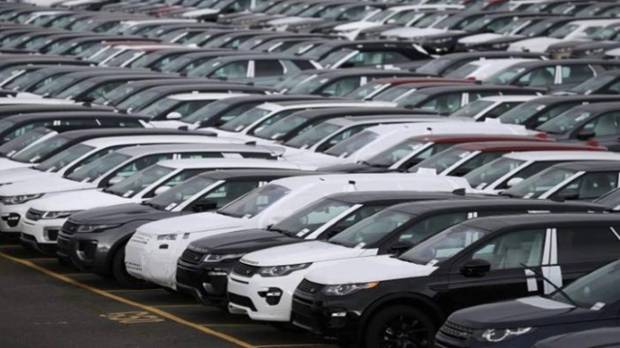By: AR Sihag and Akshaya Paul
The Sixth Assessment Report, 2023 of the Intergovernmental Panel on Climate Change (IPCC) has called for halving the global greenhouse gas (GHG) emissions within a decade if we are to have any chance of containing global temperature rise to within 1.5°C. Global warming is predicted to have serious consequences for India and we need to do all we can to meet our GHG mitigation commitments. When it comes to the transport sector in India, which ranks third in GHG emissions, road transport accounts for 90 percent of the emissions and is an important area of action. The automobile sector is a raw material intensive hard-to-abate sector making it a natural candidate for implementing circularity on the road to net-zero in 2070.
Traditionally, there has been a two-pronged approach to the regulation of vehicular pollution. Tailpipe emission regulation through instruments such as Euro and Bharat stage norms for local pollutants, and fuel efficiency norms such as Corporate Average Fuel Efficiency (CAFÉ) standards for carbon emissions. However, both these interventions operate essentially at the margins through additions of new vehicles to the stock. Since we should be concerned with the GHG emissions from the total stock of vehicles on the road, we need to pay attention at the other end — the end-of-life vehicles (ELVs). As a rule, decommissioning and scrapping of an ELV will achieve many times the carbon saving attained at the margins by the addition of a new vehicle compliant with the latest norms. Until very recently, scrapping of ELVs has not received enough policy attention.

Also Read: Top 5 sportiest 125cc bikes in India: Pulsar NS125 to KTM 125 Duke
A policy on ELVs requires a criterion to identify these vehicles. In the past this was done in an ad hoc manner, by saying that vehicles older than 10 or 15 years are ELVs. This is not a scientific approach and vehicles should be adjudged as ELVs based on proper testing of their fitness. This, indeed, is the approach of the Motor Vehicles (Registration and Functions of Vehicle Scrapping Facility) Rules, 2021 issued by the Ministry of Road Transport and Highways which seeks to promote a formal vehicle scrapping industry. As this relies on testing for fitness to identify ELVs, automated fitness centres (AFCs) have a crucial role. Automotive Industry Standard–129 has been mandated under the rules for promoting reusability, recyclability, and recoverability (3R) for disposal of ELVs.
As of now, Uttar Pradesh, Odisha, and Assam have adopted vehicle scrappage rules. There are only nine registered vehicle scrapping facilities (RVSFs) – five in Delhi-NCR, two in Gujarat, and one in Assam and Jaipur each, and there are no AFCs yet. Currently, a few manufacturers such as Mahindra, Maruti Suzuki and Toyota Tsusho, and Tata Motors have set up such facilities.
While the scrappage rules provide the regulatory framework, more needs to be done to build momentum on demand and supply side. One, the central and state governments and the original equipment manufacturers (OEMs) for vehicles need to get together to roll out the physical infrastructure for AFCs and RVSFs. The role of AFCs is critical as they are the intake point for ELVs. Two, to fully harness the 3R, the OEMs should be in the driving seat. For this, extended producer responsibility should be mandated on OEMs for vehicles being sold now or from dates in the near future.
This will enable a feedback loop to operate from the design stage and initial choice of materials to make the vehicles most 3R compatible and the OEMs will be incentivised to put in place reverse logistics for taking back, recycling, recovery, and disposal of ELVs. It will also enable better value and resource efficiency realisations from 3R activities. In keeping with global practice, a minimum percentage of reusability or recyclability should be specified which can be gradually increased later. Three, the present informal sector infrastructure for vehicle scrapping may be suitably integrated into the emerging new formal framework to leverage their strengths, efficiencies and employment potential.
Also Read: Honda Shine 100 First Ride Review: Can it outshine its competitors?
Four, to incentivise vehicle owners, the certificate of deposit for disposal of ELV should be made tradable and certain benefits such as tax reliefs or entitlement to avail subsidies under the FAME-II scheme for electric vehicles even for private vehicles could be given. Five, to provide initial momentum until the AFCs are up and running smoothly, older government and public sector vehicles, abandoned vehicles and case property vehicles could be targeted. In this regard, the announcement of the Finance Minister in the Budget 2023 speech which will send over one lakh vehicles for scrapping, is a welcome step.
The vehicle scrappage policy is at a nascent stage and these steps will accelerate it along the road.
Note: AR Sihag is a Distinguished Fellow at TERI, and former Secretary, Ministry of Heavy Industries, Government of India. Akshaya Paul is a Research Associate at TERI.
Disclaimer: Views expressed are personal and do not reflect the official position or policy of Financial Express Online. Reproducing this content without permission is prohibited.



















